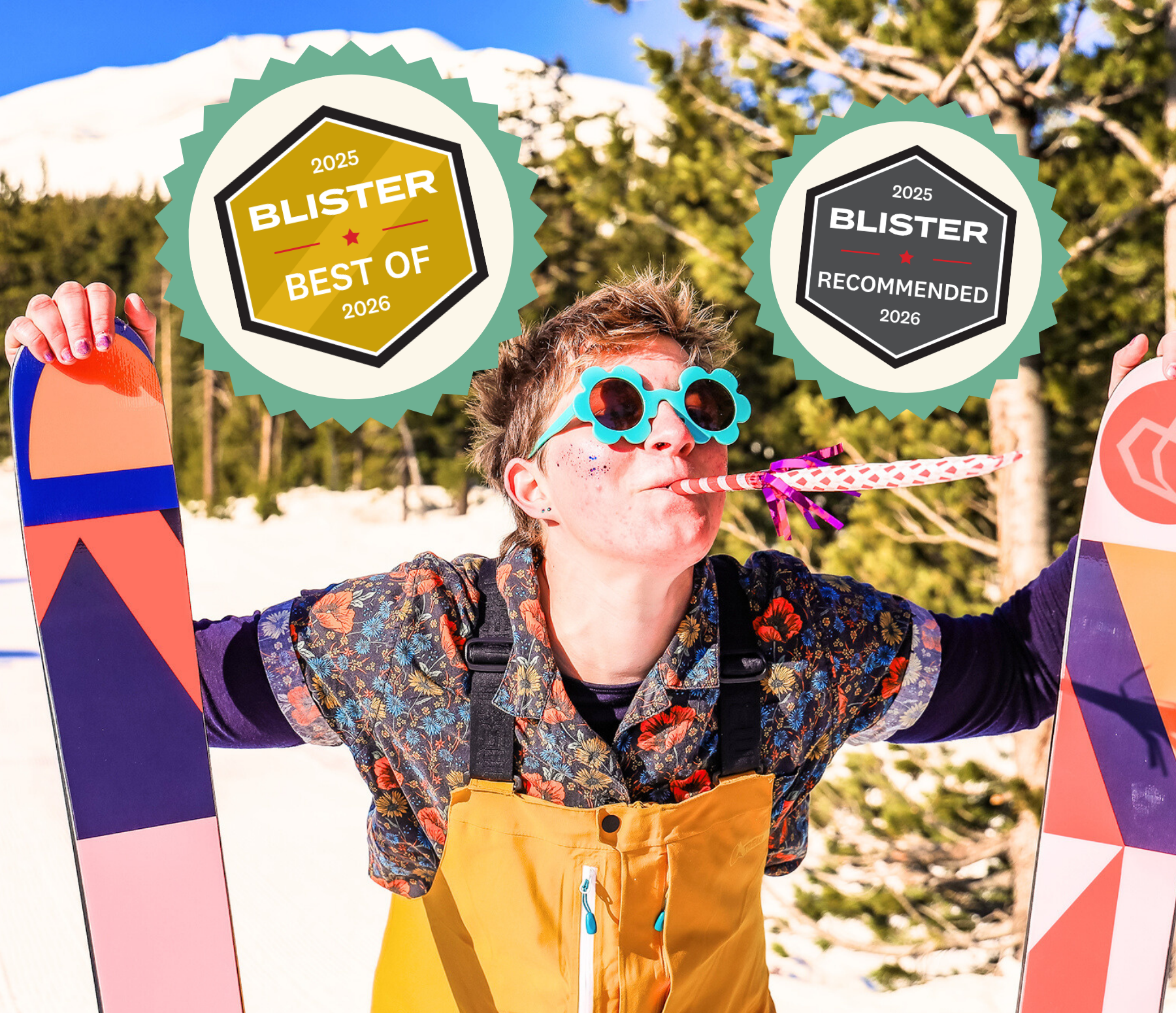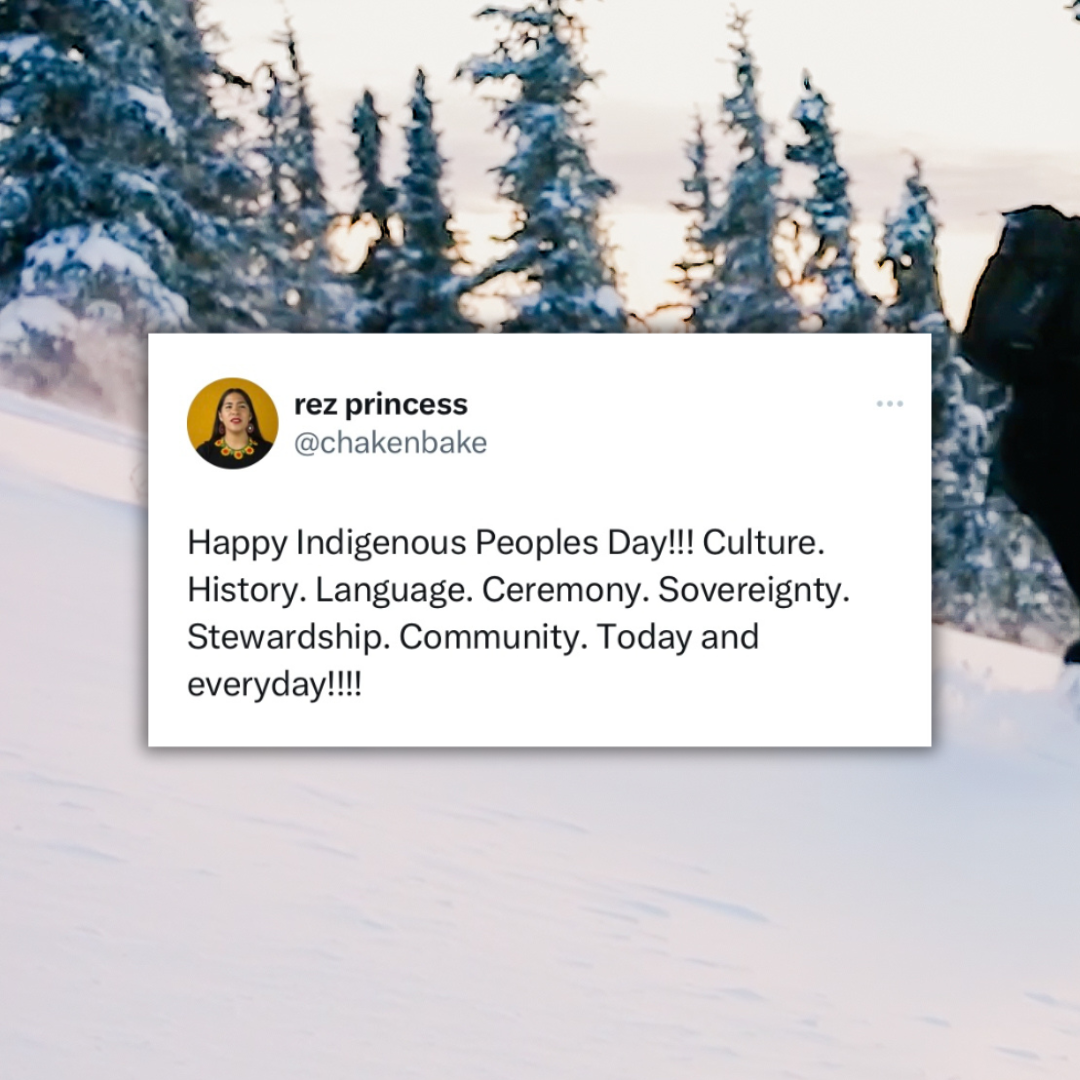Image: Mt. Hood, Photo by: Char Harris
Recently, on our community platform, the Coalition Clubhouse, our incredible Clubhouse Headmistress, Evin asked our athletes and ambassadors to learn the names of the Indigenous mountains they ski and ride on. A large part of what we stand for at Coalition Snow is inclusivity, education, justice, and respect for nature. Respect for nature and the mountains we recreate in is unequivocally linked to respect for the Indigenous people, communities, and heritage of the land. But trying to find the Indigenous names of the mountains where we recreate but isn’t easy. That’s why we asked our Athlete & Ambassador to research the USGS name (the colonial one we commonly know it by these days), the Indigenous name, and the name of the stolen lands. We hope you can put this resource to good use by referencing the Indigenous names in your social media posts and conversations with friends.
If you’re interested in more of this conversation, check out our blog about “skiing on indigenous lands,” where we discuss mountains' names/origins, the Indigenous origins of snow sports, and how to uplift and include Indigenous peoples in the snow sports community.
Nahanni McKay

USGS/Colonial Name: Mount Rundle, is named after Reverend Robert Rundle a methodist minister. The mountain was named by John Palliser who was in charge of the Palliser expedition for the geological survey of Canada. Rundle was invited by the HBC (Hudson's Bay Company) to do missionary work in the area and had only been to Banff twice. He was one of the first links in the chain that would lead to the Indian Residential School system and its devastating legacy.
Indigenous Name: Waskahigan Watchi
Stolen Lands: Treaty 7 Territory
Liz Toft

USGS/Colonial Name: The main hill at Targhee is called Fred’s. Fred Clark was the dude that added Fred’s Mountain to United States maps. On a clear day at the top of the 'ghee you see the amazing Tetons. They were first called the Tee-Win-At (High Pinnacles). Then the French named them Les Trois Tetons (tits).
Indigenous Name: Targhee is named for Chief Targhee.
Stolen Lands: Shoshone Bannock
Gyuila B

Colonial Name (Geographical Names Board of Canada - GNBC): The Rocky Mountains & Yellowhead Mountain – located on the border of Alberta and British Columbia near Jasper. It was "named" after Pierre Bostonais aka Tête Jaune, a trader who had blond hair.
Indigenous Name: Ya·ⱡiki - The Rockies are the body of Naⱡmuqȼin, a Ktunaxa giant spirit animal and warrior whose prophecy was to prepare the land for the creation of the human race. After defeating a pesky water monster, the humans were created. Naⱡmuqȼin, in all the excitement, rose to his feet, stood upright and hit his head on the ceiling of the sky. He knocked himself dead. His feet went northward and is know as Ya·ⱡiki. His head is near Yellowstone Park in the Montana.
Stolen Lands: Naⱡmuqȼin
Jaime Gilchrist

USGS/Colonial Name: Mount Hutt was named by the Canterbury Association surveyor Joseph Thomas for John Hutt, an early member of the Association. One of the other founders Willi Huber was a former member of the Waffen-SS and part of the ski field/restaurant was named after him. This was renamed in 2020 to “Ōpuke Kai” (which is the Māori name for Mt Hutt, and Kai which means food or to eat). It was renamed with consultation and permission from local Ngāi Tahu (local iwi) permission and blessing.
Indigenous Name: (Huirapa) Ōpuke (ooh - puh - key) “Place of the Hill”, Traditional Māori/ Ngāi tahu name
Stolen Lands: Ngāi Tahu (earlier Ngāti Māmoe). Classified as an area of kāinga mahinga kai – meaning it is a place where food is collected traditionally.
Kayla Riker

USGS/Colonial Name: Mary Jane Mountain. This peak of Winter Park Resort is named after a lady of the night (Mary Jane) who bought this parcel of land in the 1800s with the earnings she made. In 1975, Mary Jane opened with 18 new trails, increasing the size of Winter Park by 80%. Little is discussed of the early history of this mountain prior to the infamous Mary Jane besides the mention of the groups from which this land was stolen from.
Indigenous Name: Unknown
Stolen Lands: Nookhose'iinenno (Northern Arapaho), Tsis tsis'tas (Cheyenne), and Moache (Northern Ute) peoples
Charlotte MacDonald

USGS/Colonial Name: Mount Washington is a mountain in the presidential range. Before colonizers arrived and named the mountain, the Algonquian peoples called the summit Waumbik, "white rocks". The Mountain was renamed Mount Washington by Reverend Manasseh Cutler, the exact date of this is unknown. Reverend Manasseh Cutler made the expedition to the peak in 1784 but it wasn’t until 1792 that the name Mount Washington was seen anywhere. Meaning that this was not the first expedition to the peak, however it was the most documented one.
Indigenous Name: Agiococook, the range of the Woban-aden-ok (to the place of the high white or crystal mountains) in Algonquian. The tallest peak was called Agiococook for the great spirit believed to reside there hidden in the clouds. The Algonquian people wouldn’t climb to the summit believing that space belonged to the divine protected by high winds, avalanches, and famously bad weather.
Stolen Lands: Wabanaki (Dawnland Confederacy)
Char Harris

USGS/Colonial Name: Mt. Hood; 11,245 feet high, the fourth highest peak in the Cascades, and the highest in Oregon. Named after British admiral, Lord Samuel Hood
Indigenous Name: Wy’East, named by the Multnomah people who first inhabited the area. The legend goes the two sons of the Great Spirit Sahale fell in love with the beautiful maiden Loowit (St. Helens), who could not decide which son to choose. The two young men, Wy'east and Klickitat (Mt. Adams), battled viciously over Loowit, leaving behind a trail of destruction. Sahale was enraged by this and smote all three lovers, erecting mountain peaks to mark the place that each fell.
Stolen Lands: Cascades, Confederated Tribes of Grand Ronde, and Confederated Tribes of Siletz Indians
Lexie Gritlefeld

USGS/Colonial Name: Mount Dana, stolen name to honor James Dwight Dana, who was a professor of natural history and geology at Yale University.
Indigenous Name: Unknown but resides in Pamidu Toiyabe (Eastern Sierra Mountains)
Stolen Lands: Numu (Northern Paiute), Western Mono/Monache, Me-Wuk (Central Sierra Miwok)
Jacinta Gordon

Colonial Name: Niseko-Annupuri, although Japan doesn't have strong history of recognizing the Indigenous Peoples of Hokkaido—the Ainu People—the root of the name Niseko-Annupuri comes directly from the Ainu language. Niseko, from Nisekoan—which means 'river which runs around the bottom of a sheer cliff’ in Ainu—refers to the area that the mountain is in. Nupuri means 'mountain' in Ainu so the name "Niseko Annupuri," actually is a Colonized pronunciation of its Ainu derivative.
Indigenous Name: ニセコあんーヌプリ in Japanese (katakana & hiragana) or Nisekoan-Nupuri in romanji (english)
Stolen Lands: Nisekoan Ainu Lands





